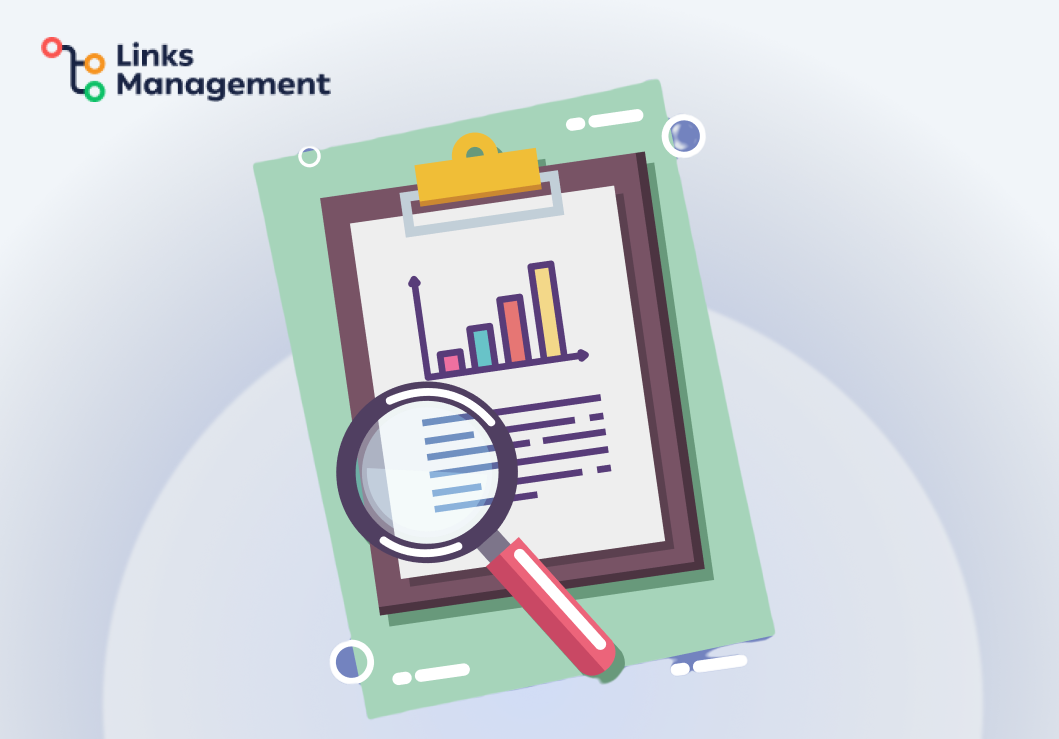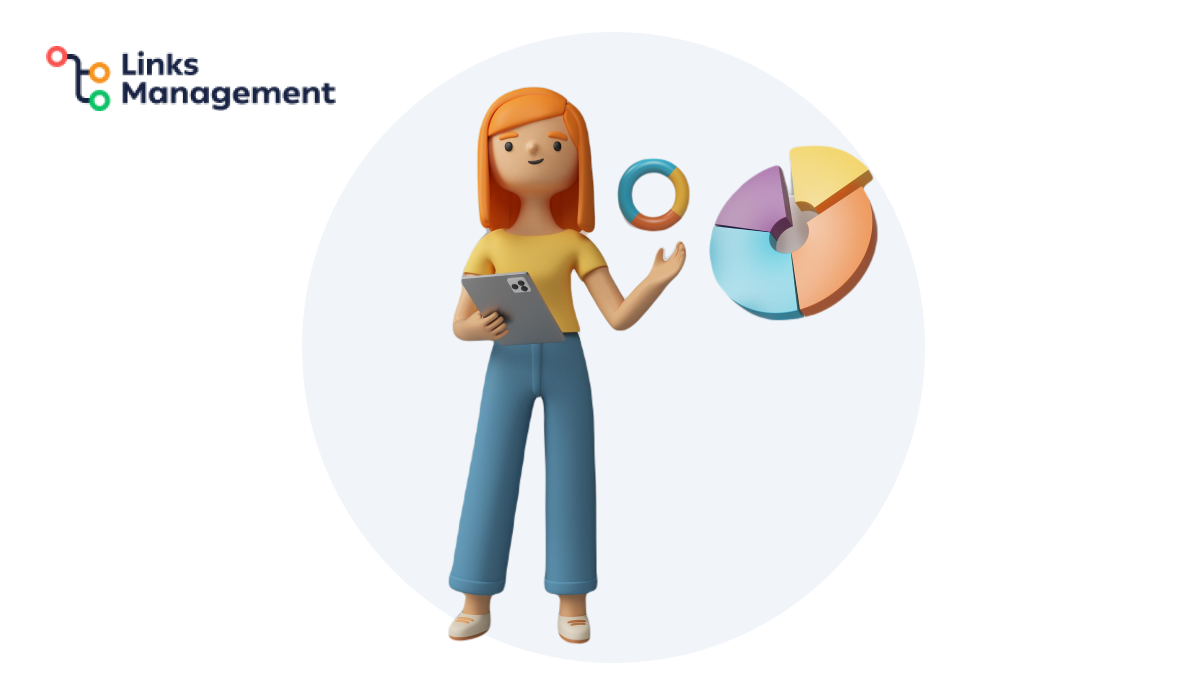How to Perform a Backlink Audit: Simple Steps
Optimization is a balancing act. You need to consider factors such as titles and keywords on each page and your server performance to get good rankings. In addition, you need to keep track of the links leading to your site, which play a crucial role in its visibility.

A thorough backlink audit is a great way to improve your performance and drive more traffic to your resource. With a few essential tools, you can improve your profile and make sure the links are helping your site grow, not hurting it.
The Meaning of Backlinks
A link is a recommendation from a webmaster to visit another website page or third-party resource. It means that the author of the content believes that this resource is valuable to the reader. Search engines value helpful content and consider such “recommendations” links when ranking sites.
The more resources that link to your site, the better. But it’s not just about quantity: links from authoritative resources that are relevant to the topic have a higher value. Link weight determines the importance of the link that the donor transfers to the site.
Which link donor is better:
- Thematic. For example, links from an online gardening magazine would be valuable to a seedling blog, not a digital blog.
- Inspires confidence. It means it is not spam and fraud and does not post “flashing” disappearing links.
- Authoritative. Such a resource has a lot of quality links from other sites.
The authority of a website is called trust. Previously, to view the trust of your resource, there was a PageRank (PR) from Google. Now search engines include the link weight indicator in the main ranking algorithm, and the counters are not available in open access.
When developing a strategy for off-page optimization of a site, you need to understand what types of links exist.
Types of Links
To work effectively with links, you need to understand their classification. Let’s take a quick look at the main types of links available to resource owners.
By lifespan:
- Rented — temporary links, usually bought for a while and then removed by the owners of the donors.
- Eternal — links that remain on the page (as a rule, they cost much more than rented ones).
Links also differ in the way they are presented in the text. Far from always, we see the Internet address directly, they are often replaced by clickable words or phrases.
Anchor — with informative text between the characters <a href= “URL”>anchor text>.
Anchorless – without text, i.e. the address of the link is its anchor, or a demonstrative word acts as an anchor, for example “here” or “more”.
In addition, links can be divided according to the naturalness of their receipt. This factor often depends on the purpose of placing a link to a resource.
- Natural — in most cases, they are affixed for free to share content on a topic or confirm their statements with proof.
- SEO links increase the link mass for website promotion. Search engines constantly fight with “paid” links but can not always distinguish them from natural ones.
The search engine determines the naturalness of the link by a combination of signs.
The system recognizes natural links through the following features:
- the topics of the donor and the site to which the link leads (acceptor) are similar;
- natural anchor (with a minimum of keywords) or no anchor;
- the time of appearance on the page coincides with the creation of the page;
- users have access to view the link;
- the context is appropriate for the link and organically contains it;
- there are transitions; users click on the link;
- there are neighbors; it is not the only one in the document.
SEO links also have a number of characteristics by which the search engine recognizes them. These features naturally flow from the mechanics and purpose of their placement:
- the topics of the pages may not be related;
- anchor sounds unnatural, contains keys;
- appearance time – later than the creation of the document;
- flashing – it either disappears or reappears when the webmaster pays for placement again;
- the location is the same on all pages, often in a separate special block for purchased links;
- user access to the link is closed;
- there are almost no transitions;
- no neighbors: other links, the text contains only one link.
A site builds natural links gradually, and buying SEO links is often accompanied by a “link explosion” – a sharp increase in backlinks.

A site can get a lot of links quickly and for natural reasons, for example, because of a news break:
- The company gets into a scandal.
- Publications write about it.
- As a result, the site receives links.
The search engines understand that there may be such cases of a sudden increase in the number of backlinks. Therefore, without other reasons, a “link explosion” is not a violation.
What Is a Backlink Audit?
To avoid being flagged by search filters and arousing suspicion from search engines, it is important to make the anchor list appear as natural as possible. Regular link audits are vital. First, let us examine the key indicators of a successful profile.

Ideally, the anchor list should include all possible variations of link texts, including those without anchors, diluted, or in the form of link pictures – not only those based on search queries.
Some key elements to focus on when analyzing the anchor list include:
- Branded anchors percentage. It may include the company or brand name, the site name, the head name, and other signs of belonging to the company.
- Non-anchor links percentage. Links include frequently used words like “here,” “more,” and “on the site,” the form of a site or page address with or without https://, www, or a slash at the end, and indication of the geographical area in the link text. Increase it if the percentage is small.
- Percentage of image links. These can be either image links or banners, and they can be useful for diversifying the anchor list, which makes the link mass appear more natural. Search engines use the Alt attribute as the anchor text. If there is no Alt attribute, the surrounding text, or the page title, can be used instead.
- Percentage of search queries and their variations. It refers to the precise matches of the search query, variations of keywords, related terms, inaccuracies in the presence of promoted content, and hyperlink texts containing unnecessary words. If a website contains a significant number of such hyperlinks, it is probable that it will be subjected to the filter.
- Avoid spamming the anchor list. Spam anchor list contains excessive number of promoted phrases in hyperlink anchors.
- Make sure that the hyperlink texts are grammatically correct. It is unacceptable to use unnatural morphological constructions in the anchor intended for search robots.
- Another essential point to consider is purchasing an equal number of links for all promoted pages. During audits, it is crucial to address the predominance of the links of the site’s main page, which can signal search engines of an unnatural increase in link mass. Avoid concentrating all link capability exclusively on promoted pages.
- Donor quality. Perform a quality control check during the donor selection phase. It is essential to regularly inspect the entire site’s link mass and address any issues that arise.
Steps of Backlink Profile Audit
With knowledge of the standards for a quality profile, you can conduct a comprehensive audit efficiently using a few simple steps.
Step 1: Data Collection
Begin the analysis by collecting the entire reference mass. Upload external links from the Google Search Console for this purpose. Use results from backlink audit tools like Majestic SEO, SEMrush, Ahrefs, and SEOmoz to complete the data collection process. Ahrefs backlink audit is a suitable option but feel free to use any other program. Transfer the data to Excel and remove duplicates thereafter.
Step 2: Removing Bad Donors
The gathered list is evaluated either manually or automatically, identifying donors with low quality.
What donors and links can qualify as low-quality?
- A website filled with spam links and non-thematic pages.
- A site that hasn’t been indexed.
- A poor-quality website with a confusing design, irrelevant content, and broken links.
- Websites under sanctions may experience erratic changes in traffic, with excerpts from the page not appearing as top results in search engines.
- Websites infected with viruses or blocked by browsers or antivirus software.
- Websites ranked by “poisonous” keywords such as porn, warez, adult, or abstracts may have lower credibility or relevancy.
- Websites with “through” outgoing links may be viewed as less trustworthy or reliable.
Eliminate the links to the advertised project from all the aforementioned sites.
Step 3: Analyze Link Placement
Next, we will analyze how the donor’s link is embedded. The following indicates poor-quality implementation:
- the link is placed in the sidebar or footer;
- the link is located off the screen (not visible);
- the link color matches the surrounding text color but is not explicitly highlighted;
- one page of the donor contains multiple links to the acceptor;
- the donor page indicates the commercial nature of the link, for example, with a label stating “advertisement” or similar;
- the link is set up as a redirect.
Step 4: Content Analysis
When auditing external links, the quality of the content and link embedding are important indicators. The quality of content and link embedding is low if:
- the content is not intended for the target audience of the donor site;
- the content is not structured or designed;
- the content does not include media;
- the content is promotional and distinct from other materials on the donor site;
- the content is prevented from being indexed by the noindex meta tag;
- the content is neither indexed nor unique, as determined by searching for excerpts from it. These excerpts should appear at the top of search results.
Brief Algorithm of Your Actions
After conducting an SEO backlink audit, a decision should be made based on the following options:
- If the donor is of low quality, then remove the link.
- If the donor and content are of high quality, but the link is poorly embedded, then it is necessary to either redo the link insertion or remove the link.
- If the donor is of high quality but the content is of poor quality, then the link must be removed or the content rewritten, and the link replaced.
Conclusion
To avoid your resource being penalized by search engines, perform proficient external site optimization. Focus on the quality, not the quantity of links. To achieve this, regularly analyze your reference mass. Pay attention to links on pages that are unrelated to the topic or with a keyword that is often repeated in the anchor list. Categorize all incoming links, removing low-quality ones while simultaneously focusing on building links on high-quality pages.
Once decisions are made, they should be implemented. Conducting a direct link audit alone will not affect the overall quality of the links. In order to improve the link mass, appropriate measures must be taken. Otherwise, conducting an audit may result in wasting time and money.
Enter URL & See What We Can Do Submit the form to get a detailed report, based on the comprehensive seo analysis.